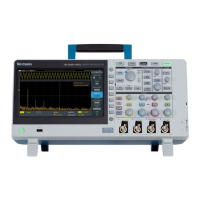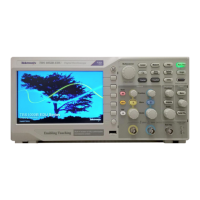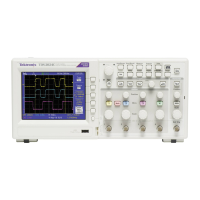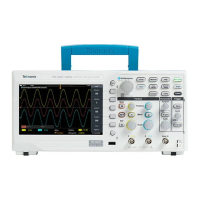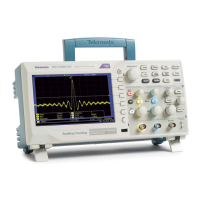Abbreviating Commands
You can abbreviate many instrument commands. These abbreviations are shown
in capital letters in the command listing in the Command Groups section and
Command Descriptions section. For example, the command ACQuire:NUMAvg
can be entered simply as ACQ:NUMA or acq:numa.
If you use the HEADer command to have command headers included as part of
query responses, you can also control whether the returned headers are
abbreviated or are full-length using the VERBose command.
Concatenating Commands
You can concatenate any combination of set commands and queries using a
semicolon (;). The instrument executes concatenated commands in the order
received. When concatenating commands and queries you must follow these
rules:
■
Completely different headers must be separated by both a semicolon and by
the beginning colon on all commands but the first. For example, the
commands TRIGger:MODe NORMal and ACQuire:NUMAVg 16 can be
concatenated into a single command:
TRIGger:MODe NORMal;:ACQuire:NUMAVg 16
■
If concatenated commands have headers that differ by only the last
mnemonic, you can abbreviate the second command and eliminate the
beginning colon. For example, the commands ACQuire:MODe AVErage and
ACQuire:NUMAVg 16 could be concatenated into a single command:
ACQuire:MODe AVErage; NUMAVg 16
The longer version works equally well:
ACQuire:MODe AVErage;:ACQuire:NUMAVg 16
■
Never precede a star (*) command with a colon or semicolon:
ACQuire:MODe AVErage;*TRG
The instrument processes commands that follow the star command as if the
star command was not there, so:
ACQuire:MODe AVErage;*TRG;NUMAVg 16
sets the acquisition mode to average and sets acquisition averaging to 16. The
*TRG command is ignored.
■
When you concatenate queries, the responses to all queries are combined into
a single response message. For example, if channel 1 coupling is set to DC
and the bandwidth is set to 20 MHz, the concatenated query:
CH1:COUPling;BANdwidth
returns CH1:COUPLING DC;:CH1:BANDWIDTH ON if header is on, or
DC;ON if header is off.
■
You can concatenate set commands and queries in the same message. For
example:
ACQuire:MODe AVErage;NUMAVg;STATE
Command Syntax
TBS2000 Series Programmer 7
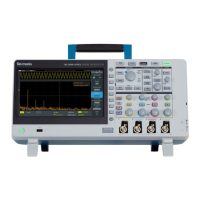
